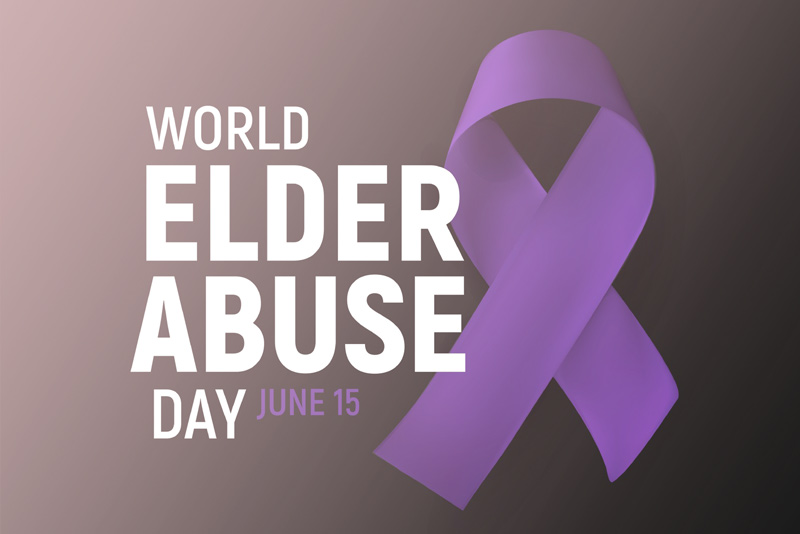Elder abuse is a serious social concern in both developing and developed countries. WHO defines elder abuse as “a single, or repeated act, or lack of appropriate action, occurring within any relationship where there is an expectation of trust which causes harm or distress to an older person”.
Since 2006, June 15 is observed as World Elder Abuse Awareness Day (WEAAD) each year. Officially launched by the International Network for the Prevention of Elder Abuse and the World Health Organization at the United Nations, this day aims to raise awareness about elder abuse, a global social issue which affects the health and human rights of millions of older persons around the world. The day gives an opportunity for global communities to provide a clear understanding of abuse and neglect of older persons. Approximately one in 10 Americans aged 60+ have experienced some form of elder abuse (National Council on Aging – NCOA).
The major types of elder abuse include physical abuse, sexual abuse, emotional or psychological abuse, neglect, abandonment, financial abuse and self-neglect. WHO has reported that rates of elder abuse are high in institutions such as nursing homes and long-term care facilities, and the rates have increased during the COVID-19 pandemic. Older persons are at a significantly higher risk of mortality following COVID-19 infection, even though all age groups are at risk. Age discrimination is also common when it comes to decisions on medical care, triage, and life-saving therapies. Along with threatening the lives and safety of older persons, the pandemic also impacts their access to health services, jobs, pensions and even social networks.
The UN chief António Guterres has stated that “Older people have the same rights to life and health as everyone else. Difficult decisions around life-saving medical care must respect the human rights and dignity of all.”
Being a medical record review company with years of experience in the industry, we have assisted many law firms that deal with elder mistreatment cases. Important risk factors for elder mistreatment are cognitive impairment, need for assistance with activities of daily living, caregiver burnout and frustration, substance abuse by the caregiver or the patient and more. Nursing homes’ failure to meet the general/medical duty of care outlined under the specific state law makes the elderly eligible to file a compensation claim. Each year, the number of elder abuse lawsuits, even against licensed nursing home facilities are increasing. Medical records are a major proof of abuse or neglect in a nursing home. Accused facilities may even alter medical records to hide any malpractice, abuse, neglect or poor standards of care. However, a comprehensive medical chart review would reveal any such alterations or tampering.
Certain records that help prove nursing home neglect include:
- Hospital records prior to nursing home admission
- Admission evaluations upon entering the nursing home
- Nursing notes from the resident’s chart that details daily care and changes in condition
- Physician entries during admission
- Records of therapy – physical therapy and occupational therapy
- Medication and treatment administration records
- ADL flow sheets – how certified nursing assistants (CNAs) assisted a resident
- Laboratory/imaging reports detailing images of fractures or injuries
- Images of any injuries or wounds
- Insurance claim records and bills
Nursing home abuse and neglect injuries may be covered under personal injury law, medical malpractice, or even wrongful death law. Proper review of medical records helps attorneys find evidence that could support their case, and also identify any records that are missing or altered. Other evidence to prove the case may include video surveillance, staff testimonies, eye-witness accounts and more.



